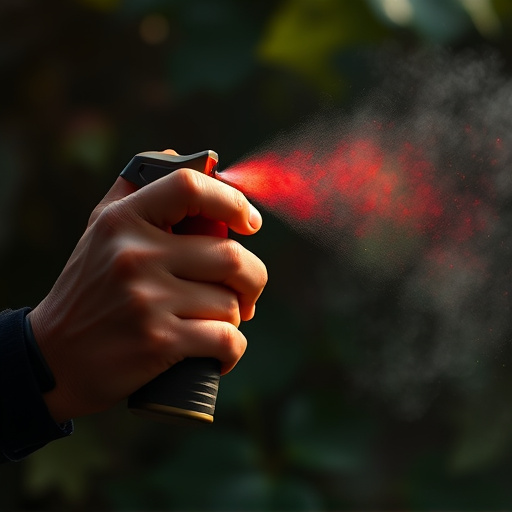Riot control agents like pepper spray are designed for temporary disruption without permanent harm. To neutralize pepper spray on the face, rapid decontamination with water for 15 minutes or specialized eye washes is crucial. Effective use involves maintaining distance, aiming for the face and eyes, and seeking immediate relief through fresh air and water to alleviate burning sensations and difficulty breathing. Strict regulations govern the deployment of these agents, emphasizing de-escalation and minimizing harm while holding officers accountable.
In the realm of law enforcement, riot control agents (RCAs), including pepper spray, are powerful tools used to manage crowds and neutralize potential threats. Understanding these agents, their types, and effects is crucial for both officers’ safety and public assurance. This article explores safe handling techniques, delves into legal considerations surrounding RCA use, and offers insights on effective strategies, especially focusing on neutralizing pepper spray on the face—a key skill in modern policing.
- Understanding Riot Control Agents: Types and Effects
- Safe Handling and Application Techniques for Pepper Spray
- Legal Considerations and Regulations in Law Enforcement Use of Riot Control Agents
Understanding Riot Control Agents: Types and Effects
Riot control agents, also known as less-lethal weapons, are chemical compounds designed to disrupt and disperse crowds without causing permanent harm. These agents operate by stimulating the senses or affecting an individual’s physical abilities, making them essential tools for law enforcement in managing civil unrest or high-risk situations. The most common types include tear gas (e.g., chloroacetophenone), pepper spray (capsaicin), and smoke bombs.
When it comes to neutralizing pepper spray on the face, a popular riot control agent, the primary focus is on rapid decontamination. Pepper spray can cause severe eye irritation, coughing, and difficulty breathing, so immediate actions are crucial. Flushing the affected area with water for at least 15 minutes is recommended to dilute and wash away the chemical irritant. In some cases, neutralizing eye washes or specialized decontaminants may be used to expedite the process and alleviate discomfort.
Safe Handling and Application Techniques for Pepper Spray
Pepper spray, a common riot control agent, is potent and can cause significant discomfort, even blindness, if misused or mishandled. Law enforcement officers must be trained in its safe application to ensure minimal harm to both suspects and bystanders. The key to effective use lies in proper technique, which includes maintaining a safe distance, aiming for the face and eyes, and using quick, short bursts. When deployed, individuals should immediately seek fresh air and wash their faces with water to neutralize the pepper spray, alleviating symptoms like burning sensations, tears, and difficulty breathing.
Training should emphasize the importance of controlling the spray’s direction, as wind can carry it unpredictably. Officers must also be equipped with protective gear, including eye protection, to safeguard against accidental exposure. Understanding these safe handling practices is crucial for maintaining public safety during law enforcement operations involving pepper spray.
Legal Considerations and Regulations in Law Enforcement Use of Riot Control Agents
The use of riot control agents by law enforcement is a delicate balance between maintaining public safety and respecting individual rights. In many jurisdictions, the deployment of such agents like pepper spray is heavily regulated to ensure their responsible and proportional use. Legal considerations around these chemicals often revolve around the concept of necessity and the potential for misuse or accidental injury. Law enforcement agencies must adhere to strict protocols when employing riot control measures, including thorough risk assessments and a clear chain of command to authorize their use.
Regulations vary across regions but typically include guidelines on the types of agents permitted, their concentration levels, and the specific tactics allowed. For instance, many places have strict rules around the neutralization of pepper spray on the face, emphasizing the need for de-escalation techniques and minimizing physical harm to individuals under arrest or control. These regulations not only protect citizens but also ensure that law enforcement officers are held accountable for their actions, fostering public trust and confidence in the justice system.
Riot control agents, such as pepper spray, are powerful tools for law enforcement, but their use comes with significant legal and ethical considerations. By understanding the types of agents, their effects, and safe handling practices, officers can effectively manage crowd control while minimizing potential harm. Additionally, adhering to regulations and legal guidelines ensures that the use of these agents remains proportionate and justifiable. Remember, proper training and compliance are key to neutralizing pepper spray situations safely and responsibly.
